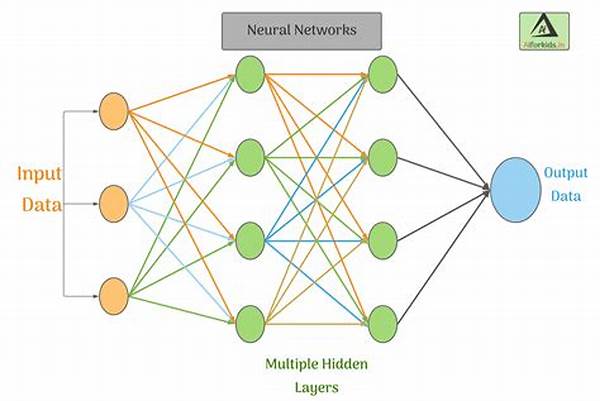Hey there! If you’ve ever dabbled in the world of artificial intelligence or machine learning, you’ve probably heard the term “labeled data” tossed around quite a bit. It’s a crucial component for training neural networks, those complex models we use to make predictions, recognize objects, and even compose music. But why is labeled data so important, and how does it fit into the grand scheme of things in AI? Grab a cup of coffee, and let’s dive into it!
What is Labeled Data for Neural Networks?
Labeled data is essentially the backbone of supervised learning models, which includes most neural networks. Imagine showing a child flashcards with pictures and asking them to say what’s on them—that’s what labeled data does for neural networks. Each piece of data comes with a corresponding label that tells the model what it’s looking at or dealing with. This labeled data allows the neural network to “learn” from examples and make accurate predictions in the future. The more data you have, the better your model can potentially perform, but quality beats quantity. If your data isn’t labeled correctly, even the snazziest neural network could get confused quicker than you can say “backpropagation”! So, if you’re building or training neural networks, having a robust set of correctly labeled data is like having a reliable roadmap on a long journey.
Why We Need Labeled Data for Neural Networks
1. Training the Model: Labeled data for neural networks provides the examples the model needs to learn and make accurate predictions. Without it, the model would be as lost as a traveler without a map.
2. Error Identification: It helps in identifying where the neural network is going wrong. By comparing predicted outputs to the actual labels, we can spot errors and tweak the model accordingly.
3. Improving Accuracy: The quality and quantity of labeled data directly impact the neural network’s performance. More accurate labels can lead to better predictions and more trusted outcomes.
4. Model Evaluation: With labeled data, you can evaluate how well your neural network is performing by cross-referencing predictions against true labels. This step is crucial for refining and improving model performance.
5. Adaptability: Thoroughly labeled datasets give neural networks the foundation to adapt to new, unseen data. This adaptability is key for models that need to be flexible and scalable.
How to Label Data for Neural Networks
Labeling data for neural networks often involves team effort. Crowdsourcing platforms, specialized labeling teams, and in-house experts work together to classify and tag data accurately. Picture a group of enthusiastic librarians meticulously categorizing books into the perfect sections; that’s how data labeling works. It’s not just about slapping on a tag. It’s about understanding the intricacies of the data and ensuring it aligns with your model’s goals. In many cases, AI and humans team up in this labeling process. AI can often perform preliminary labeling, and humans refine this work to ensure accuracy. After all, a neural network is only as good as the data it learns from!
Steps to Ensuring Quality Labeled Data for Neural Networks
1. Define Your Goals: Clearly outline what you need from your labeled data to ensure it’s aligned with your neural network’s objectives.
2. Choose the Right Tools: Use the best tools and platforms for labeling, which can streamline the process and make it more efficient.
3. Quality Control Measures: Implement quality checks to maintain high labeling standards. It’s like proofreading before publishing!
4. Human Oversight: Even with AI tools, human oversight is essential to ensure that the data is labeled correctly and contextually.
5. Iterative Checking: Regularly verify and update your labeled data set to account for any discrepancies that may arise over time.
6. Comprehensive Training: Ensure that anyone involved in data labeling is adequately trained and understands the model’s objectives.
7. Feedback Loops: Incorporate feedback loops so that labelers can learn from mistakes and improve their accuracy over time.
8. Consistent Updates: Keep your labeled dataset updated to reflect any changes in the real-world scenario your neural network will operate in.
9. Incentivize Quality: Encourage high-quality work from labelers through incentives or recognition.
10. Use of AI in Labeling: Leverage AI tools for preliminary labeling, but always follow up with human validation to ensure complete accuracy.
Challenges of Using Labeled Data for Neural Networks
Labeled data for neural networks comes with its own set of challenges. First, labeling can be time-consuming and resource-intensive. Gathered data must be meticulously checked for quality and consistency, which isn’t always easy. Moreover, human error can lead to mislabeled data, affecting the neural network’s learning process. There’s also the issue of bias; if the data contains inherent biases, the model will learn them, leading to skewed predictions. Therefore, diverse data sources and rigorous quality controls are key to minimizing these risks. However, overcoming these challenges can significantly enhance the performance and reliability of your neural networks, making the effort well worth it.
Conclusion: Labeled Data is the Key to Successful Neural Networks
To wrap it up, labeled data for neural networks is akin to a tutor guiding a student. It provides the essential feedback needed for the model to learn, adapt, and excel. The process of obtaining and curating labeled data is demanding but undeniably crucial. With the right strategies in place, from crowdsourcing to AI assistance, you can build a robust labeled dataset that drives your neural networks to new heights. So next time you’re embarking on a machine learning project, remember—labeled data is not just a stepping stone, but a cornerstone! Whether you’re a seasoned data scientist or an enthusiastic newbie, understanding the importance of labeled data is your ticket to mastering the world of AI.

